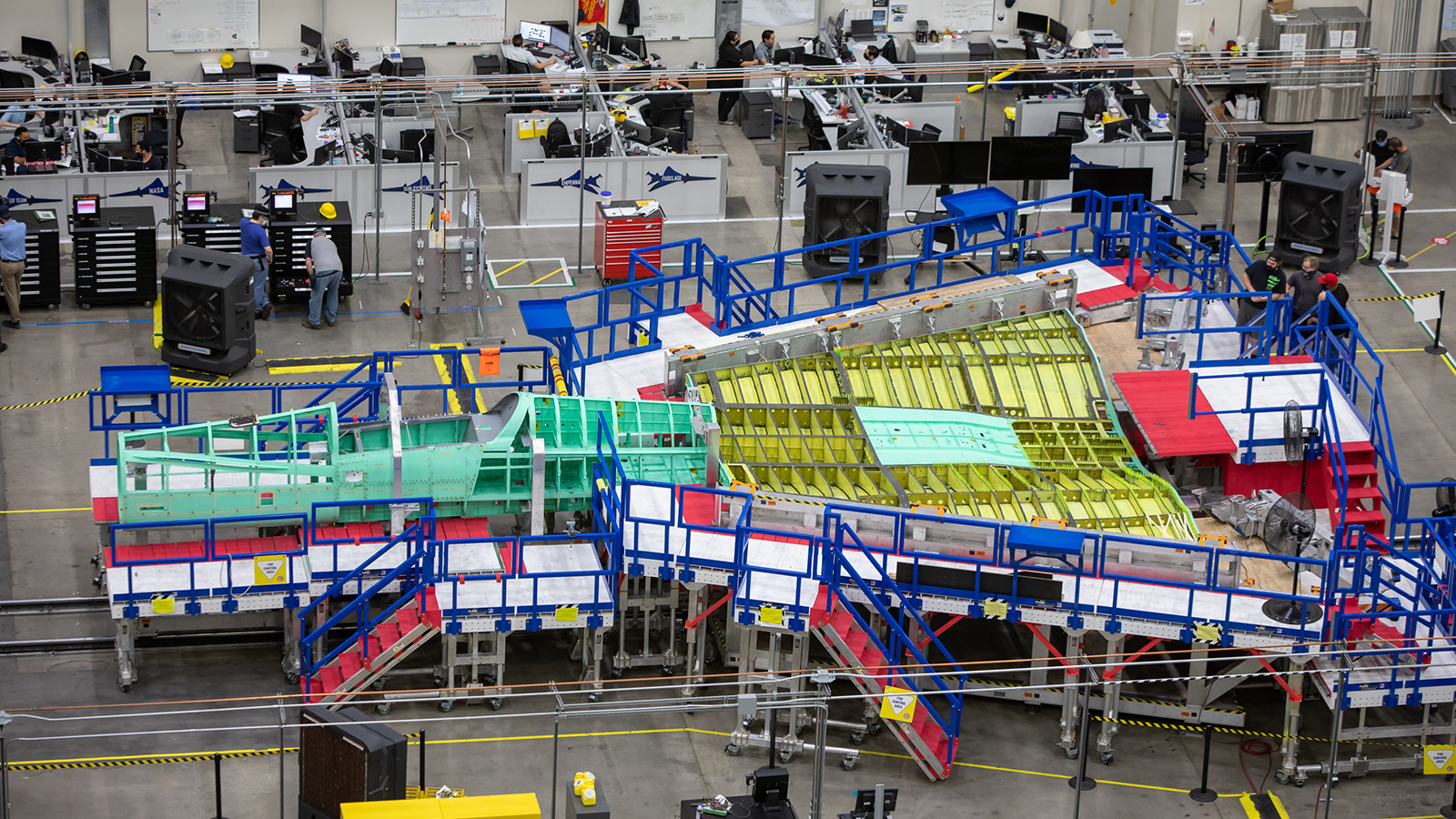Stay Up to Date
Submit your email address to receive the latest industry and Aerospace America news.
First flight of low-boom aircraft planned for 2021
Lockheed Martin’s construction of NASA’s supersonic experimental aircraft remains on track for a first flight in late 2021, the company’s program manager said today.
“Although we have seen some delays in certain areas, especially from suppliers delivering parts, none of those delays have translated to affecting the critical path of the schedule,” said Peter Iosifidis, speaking this morning at the AIAA Aviation Forum, held via video conference. “All our major milestones and those types of items are on schedule. Every delay that we’ve currently had, we’ve been able to accommodate by shifting work around other activities.”
He said the plane will be flying by “fourth quarter” of 2021.
Iosifidis presented a video showing the nose of the X-59 being manufactured and a robot attaching the skin of the plane’s delta-shaped wing.
The progress keeps the timeline intact for a pilot to fly the X-59 over residential areas in the U.S. to gather community feedback about the noise generated by its supersonic flights. The plane’s low-boom design is intended to emit a thump rather than the cracking sound normally associated with faster-than-sound flight.
NASA’s goal is to deliver this community response data to the International Civil Aviation Organization early in 2027, in time for consideration by ICOA’s Committee on Aviation Environmental Protection in February 2028, said Peter Coen, manager of NASA’s low-boom supersonic flight demonstration program, speaking at the Aviation Forum. But first, 18 months of proof-of-safety flights will be performed out of NASA’s Armstrong Flight Research Center in California, followed by acoustic testing over Edwards Air Force Base and then, in 2022 or ’23, the first flights over communities throughout the U.S.
“One of the things that we believe at NASA is that the overland flight restrictions that were put in place based on the unacceptability of sonic boom noise — those are the principal barriers to achieving supersonic flight for the traveling public,” Coen said. “Aircraft and airline operations really need access to all routes, including those which go over land.”
For supersonic aircraft takeoffs and landings, the FAA proposed a noise standard on April 13 that is similar to existing requirements for subsonic aircraft, and public comments on the proposal are due back by July 13. The takeoff and landing noise standard would be the first step toward allowing manufacturers to request certification of their supersonic aircraft, said Kevin Welsh, executive director of FAA’s office of environment and energy.
In addition to noise issues, aircraft emissions will be another major environmental hurdle for supersonic airplane manufacturers and operators, and FAA expects them to look to options like sustainable alternative fuels and carbon offset purchases, Welsh said.
“On emissions, that’s a question that’s going to be challenging. It’s going to be something that the industry side needs to address very seriously, and the government regulators are also going to look into,” he said.
About Keith Button
Keith has written for C4ISR Journal and Hedge Fund Alert, where he broke news of the 2007 Bear Stearns hedge fund blowup that kicked off the global credit crisis. He is based in New York.
Related Posts
Stay Up to Date
Submit your email address to receive the latest industry and Aerospace America news.




